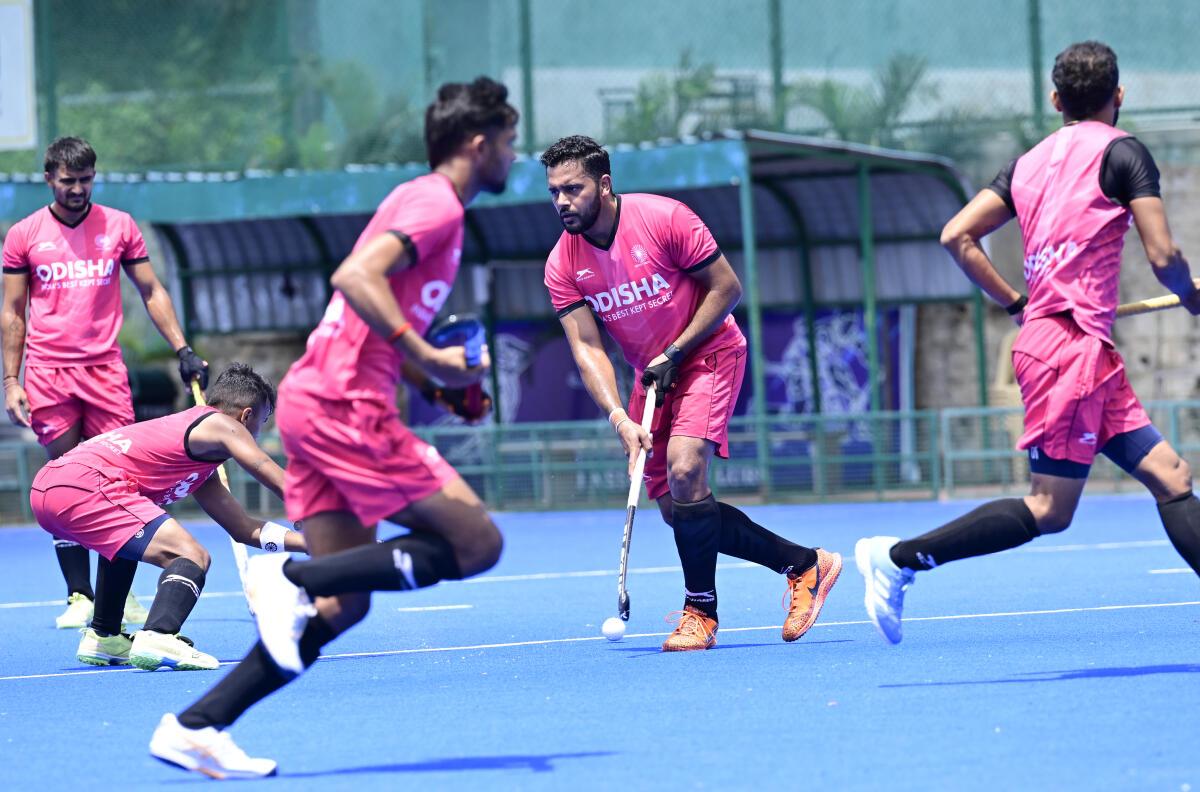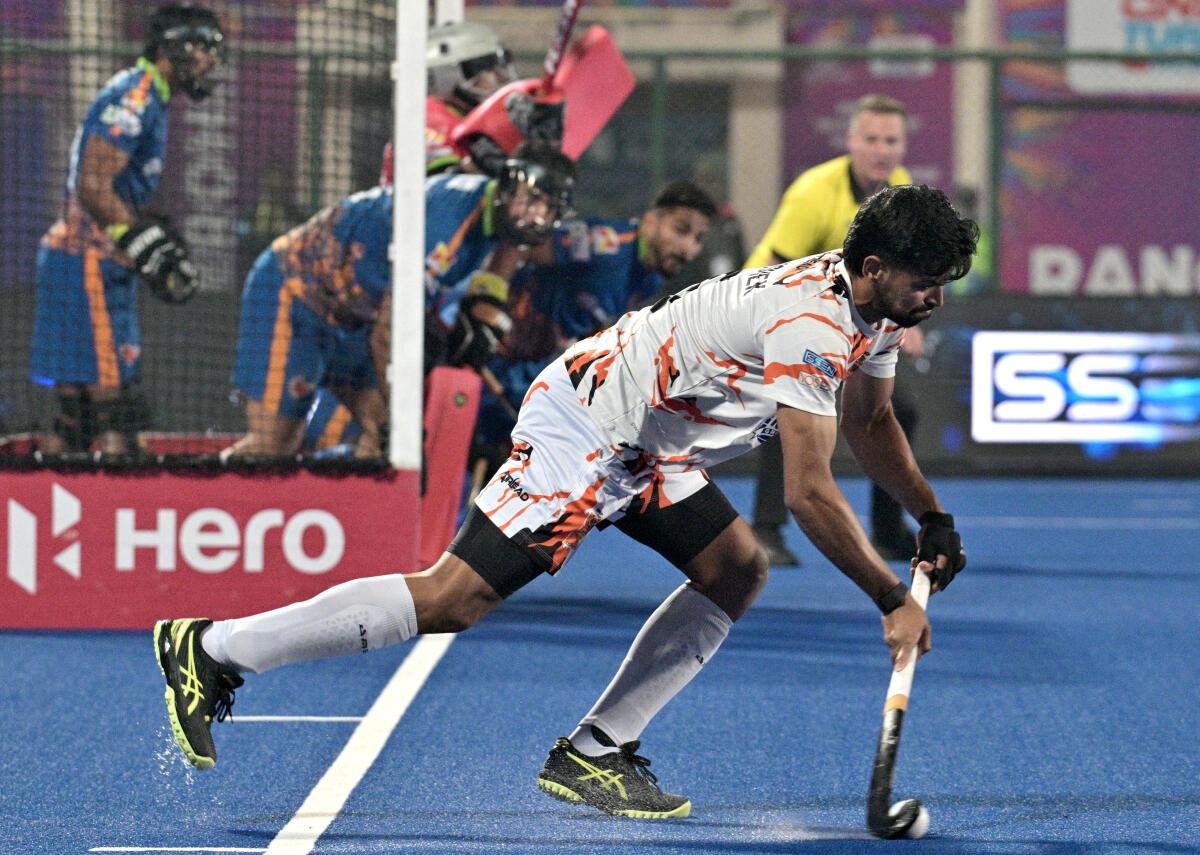Asia Cup Hockey 2025 in Rajgir: Preview, squad, pools, key storylines
The Indian men’s hockey team stumbled in its first attempt to secure a spot at the 2026 World Cup, dropping to seventh in the world after a dismal European leg of the FIH Pro League 2024-25. One win from eight matches and a record seven-game losing streak — the longest in India’s history — turned a side once seen as title contender into one relieved to cling to its top-tier status.
Now, as Craig Fulton’s men shift focus to the Asia Cup in Rajgir, Bihar, a World Cup qualifier and, in the coach’s words, the “most important tournament of the year” — the question is whether the Pro League collapse was an aberration or a symptom of deeper problems.
The burden of expectations
India enters the tournament as a three-time champion, the highest-ranked side, and Asia’s flag-bearer in world hockey. That pedigree brings both opportunity and pressure: the need to reassert dominance on the continental stage while silencing doubts about its recent slide.
Defensive frailties
Fulton’s “defend-to-attack” philosophy, built on fitness and quick transitions, fell apart in Europe. India conceded 26 goals across eight games, undone by slack clearances, mistimed tackles, and poor positioning inside the defensive ‘D’. Six of those seven defeats came by a single goal, five of them in the final quarter.
Yet Fulton remains optimistic. “Over the last 18 months, we’ve been on the up,” he told Sportstar. “Yes, we had a bit of a [bad] phase, but it happened in the five games we played against Australia before the Olympics, and we defeated them in Paris. There is a reason we play the best teams so that we can become better.”

Since the Paris Olympics, injuries have blunted captain Harmanpreet Singh’s impact, depriving India of its most reliable drag-flicker in key moments.
| Photo Credit:
K. MURALI KUMAR
Since the Paris Olympics, injuries have blunted captain Harmanpreet Singh’s impact, depriving India of its most reliable drag-flicker in key moments.
| Photo Credit:
K. MURALI KUMAR
Experience under strain
India had one of the most seasoned squads in the Pro League: only three of 24 players had fewer than 50 caps, while 14 had over 100. That such a unit buckled under pressure and lost decision-making sharpness was concerning. Tactical tweaks unsettled the balance, exposing defensive gaps against top-tier opponents. “We struggled to hold a consistent defensive shape, particularly when we committed players forward on the attack. We took some risks with new strategies; they didn’t always pay off, but the lessons we learned will be crucial for the tournament ahead,” admitted captain Harmanpreet Singh, who missed five matches with a finger injury.
Penalty corner puzzle
Harmanpreet’s absence cost India more than its best defender; it also robbed the team of its most lethal drag-flicker. Though he still managed six Pro League goals to share top-scorer honours with Abhishek, injuries since the Paris Olympics have hampered him. With Amit Rohidas, Jugraj Singh, and Sanjay unable to replicate his threat, India faces hard questions about set-piece strategy.
“When Harmanpreet isn’t on the field, do we need to re-examine our penalty corner routines? Can more variations ease the pressure on him and the rest of the team?” the piece asks. Fulton insists patience is key. “We get an average of 5-6 penalty corners a game, sometimes even more. We have a few other drag-flickers who are still learning and need more exposure to convert those chances. We always practice variations; it is all about how we use them.”

Among Asia’s quickest players, Abhishek blends raw pace with flair, a nightmare combination for any defender.
| Photo Credit:
SHASHI SHEKHAR KASHYAP
Among Asia’s quickest players, Abhishek blends raw pace with flair, a nightmare combination for any defender.
| Photo Credit:
SHASHI SHEKHAR KASHYAP
Goalkeeping concerns
The Pro League also exposed frailties in goal. Krishan Pathak struggled with aerial balls, a weakness ruthlessly exploited by tall European forwards. Suraj Karkera looked sharper but faltered in pressure moments. With defensive lapses leaving them exposed, forwards were forced to shoulder more responsibility.
“Forwards are the first line of defence,” explained Abhishek. “I’ve had to become much more switched on when we don’t have the ball. It’s all about giving our defenders more cover and perfectly executing our man-to-man strategy.”
Course correction
India has since regrouped with a four-week camp at the Sports Authority of India (SAI), Bengaluru, before a preparatory tour in Western Australia. “We’re in a good position now going into this tournament,” Fulton said. “I think we’ve had a real focus on our physical conditioning. We’ve upped it in terms of being better prepared tactically.”
Battleground Asia
For India, the Asia Cup has always been more than just another tournament — once a stage of near-misses, later a showcase of dominance, and now a proving ground with a World Cup spot at stake. Fulton must walk a tightrope: chasing gold, testing tactical innovations, and still keeping cards in hand for bigger battles ahead.
India’s record against Asian rivals in recent years is daunting. The team scored 94 goals in 14 matches across the 2023 Asian Games and 2024 Asian Champions Trophy. But history warns against complacency. The bronze at the 2022 Asia Cup was a sobering reminder that form can dip sharply after peaks.
No Pakistan, less sparkle
The absence of Pakistan dims the tournament’s lustre. The rivalry remains the region’s marquee attraction, even when the teams are unevenly matched. Following the Pahalgam terror attack and heightened military tensions, Pakistan declined its invitation, despite India’s promise of visas, citing security concerns. The Asian Hockey Federation turned to Bangladesh to fill the void. India now faces China, Japan, and Kazakhstan (a late replacement for Oman) in Pool A. Pool B features Malaysia, Korea, Chinese Taipei, and Bangladesh. The tournament opens on August 29, with Malaysia facing Bangladesh, followed by defending champion Korea against Chinese Taipei, before India launches its campaign against China.
Host factor
The Asia Cup also marks the men’s first major outing in Bihar. After Rajgir’s successful staging of the Women’s Asian Champions Trophy, excitement is palpable.
“We’re absolutely thrilled to be playing in Rajgir,” said veteran midfielder Manpreet Singh. “It’s fantastic to see more states building world-class infrastructure for international hockey. The girls told us all about the incredible local support they received during the ACT. We can’t wait to get out there and give them our best game.”
With a World Cup berth and continental supremacy on the line, India has little margin for error. Anything less than victory could trigger uncomfortable questions about both strategy and leadership.
Indian squad for men’s Asia Cup 2025 & Groups
GOALKEEPERS: Krishan B Pathak, Suraj Karkera
DEFENDERS: Sumit, Jarmanpreet Singh, Sanjay, Harmanpreet Singh, Amit Rohidas, Jugraj Singh
MIDFIELDERS: Rajinder Singh, Raj Kumar Pal, Hardik Singh, Manpreet Singh, Vivek Sagar Prasad.
FORWARDS: Mandeep Singh, Shilanand Lakra, Abhishek, Sukhjeet Singh, Dilpreet Singh
ALTERNATES: Nilam Sanjeep Xess, Selvam Karthi
Pool A
India, Japan, China, Kazakhstan
Pool B
Malaysia, Korea, Bangladesh, Chinese Taipei
Published on Aug 27, 2025



